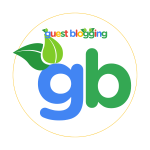Block play can foster children’s development more than other activities.
Every setting can benefit from block play’s open-ended, imaginative, and worthwhile play and learning opportunities.
It gives kids the freedom to experiment with, disassemble, and reassemble any block-based creation they can come up with.

Numerous advantages can be had from this activity. Ten areas of learning that can benefit from improvements are listed below, many of which were first emphasized by the National Association for the Education of Young Children:
Imagination – Children are free to explore their own ideas through block play as they set out on a discovery journey or participate in the growth of their friends’ creations.
Self-expression – Children can communicate with one another through play, inventions, and discoveries. This is especially useful for bilingual or non-verbal children.
Problem-solving – Blocks provide a great platform for the development of logic and problem-solving abilities. This can happen on purpose, with kids consciously trying to come up with a solution, or it can happen naturally as kids play and discover firsthand what works and doesn’t.
Mathematics – The variety of sizes, colors, and shapes that are available makes it easy for kids to practice key math concepts like measurement, number, symmetry, balance, and estimation. We can encourage more play and exploration by contrasting different shapes and sizes, making patterns, or offering tools for measuring and weighing.
Physical development – Reaching for, lifting, moving, and building with blocks helps children develop their hand-eye coordination and spatial awareness while strengthening their fingers, hands, and arms.

Blocks are loose parts, so kids are free to combine and rearrange them in countless ways. This fosters creativity. To increase opportunities for creativity, incorporate additional materials like dough, small-world characters, or paint and pencils.
Science – Children can hone their problem-solving abilities, test hypotheses, and practice scientific reasoning by investigating cause and effect and conducting experiments. They learn about balance, weight, spatial awareness, and gravity with the aid of blocks.
Self-esteem – By taking risks while playing with blocks, kids can learn that they have their own unique ideas. Children feel a sense of accomplishment as they “have a go,” developing and creating something fresh and original.
PSED (personal, social, and emotional development) – Children can collaborate and bargain while playing with blocks. They cooperate, share resources, and take turns as they make new friends. Additionally, it promotes independence, lengthens attention span, and strengthens a sense of self.
Communication and literacy – As children engage in block play and learn new things, there are numerous opportunities for conversation and the emergence of new vocabulary. Additional advantages can be reaped from social interaction with peers and adults, and using blocks can encourage cooperative storytelling and story creation.

Adult assistance
When watching children play with blocks, you can help them by recognizing and encouraging the traits of effective learning. Important inquiries for adults to make include:
Are the kids coming up with and acting on their own ideas? Do they select and consider their own methods of doing things?
Are the kids in their block play willing to try something new and take chances? If nothing seems to be working, do they try again?
Are there any kids involved? Are they focusing on what they hope to accomplish?
Are the kids having fun with their play and learning? Do they take pleasure in completing their goals?

Block play can be an engaging setting in which we as practitioners can gain a deeper understanding of a child’s world by scaffolding ideas using open-ended questions or making “I wonder” and “I notice” comments to children. You can find and choose lots of block play toys for your kids at Mellis Kids.
Tuyên bố miễn trừ trách nhiệm: Thông tin được cung cấp chỉ mang tính chất thông tin chung, dichvuseo365.com không đưa ra bất kỳ tuyên bố hoặc bảo đảm nào liên quan đến thông tin, bao gồm nhưng không giới hạn bất kỳ sự tuyên bố hoặc bảo đảm về tính thích hợp cho bất kỳ mục đích cụ thể nào của thông tin theo phạm vi cho phép tối đa của pháp luật. Mặc dù đã nỗ lực để đảm bảo rằng thông tin được cung cấp trong bài viết này là chính xác, đáng tin cậy và hoàn chỉnh vào thời điểm đăng tải, nhưng thông tin được cung cấp trong bài viết này không nên được dựa vào để đưa ra bất kỳ quyết định tài chính, đầu tư, bất động sản, giao dịch hoặc pháp lý nào. Thêm vào đó, thông tin không thể thay thế lời khuyên từ một chuyên gia được đào tạo, người mà có thể xem xét, đánh giá các sự kiện và hoàn cảnh cá nhân của bạn, và chúng tôi không chịu bất kỳ trách nhiệm nào nếu bạn sử dụng những thông tin này để đưa ra quyết định.





